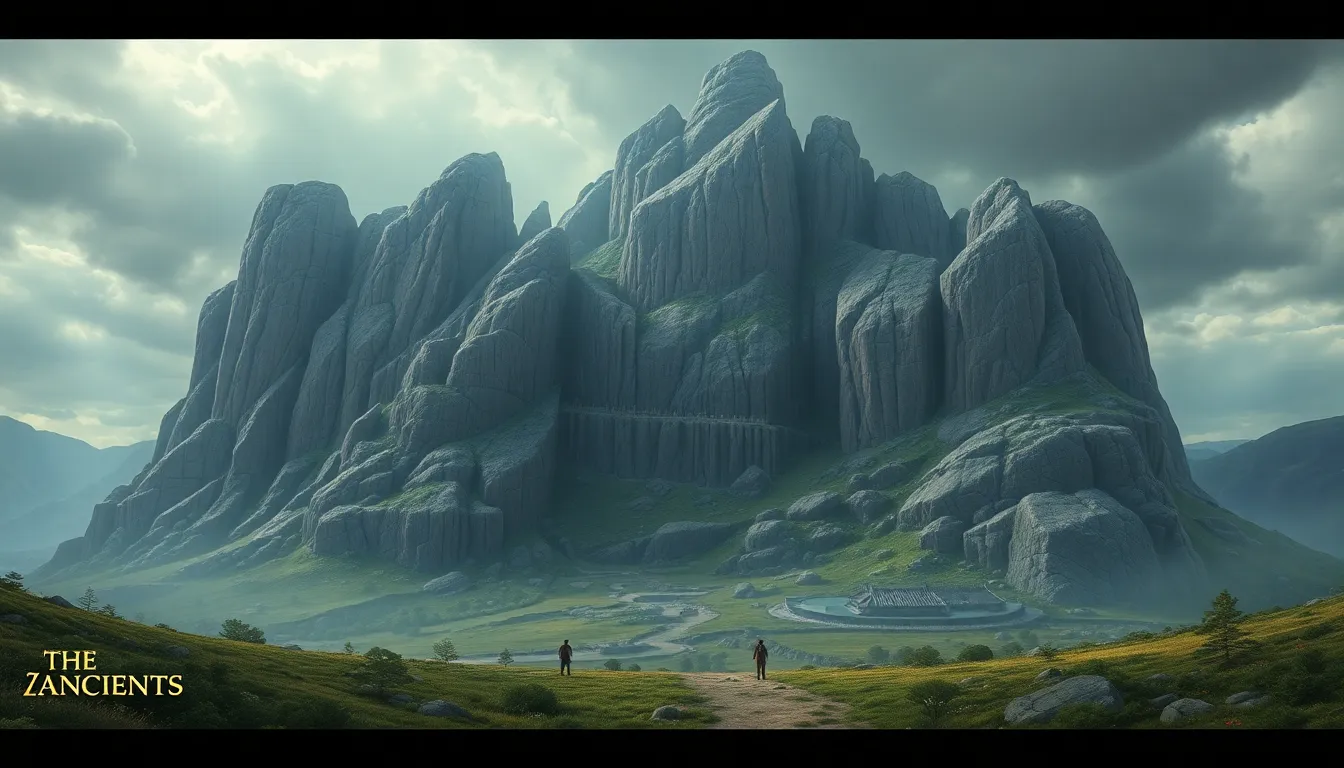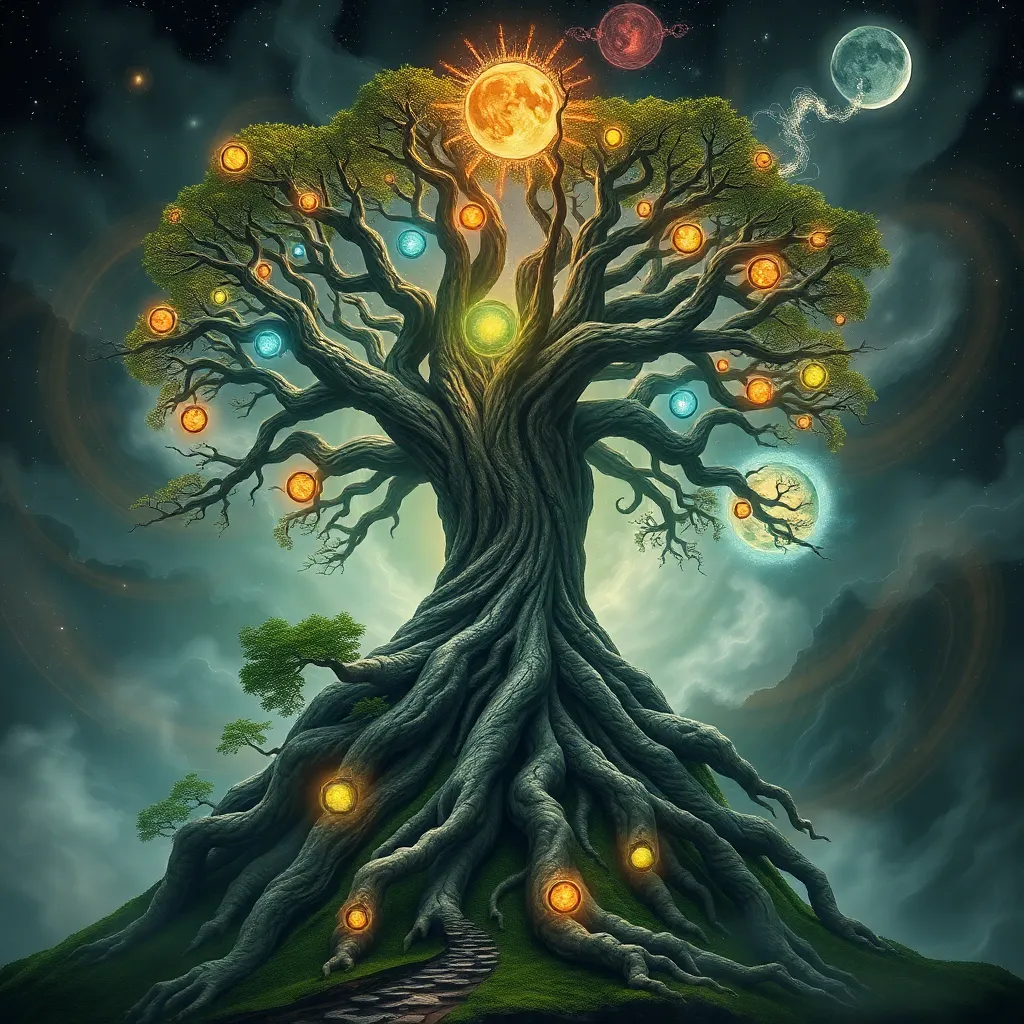The Mountain of the Ancients: Echoes of Early Civilizations
I. Introduction
The Mountain of the Ancients stands as a testament to the enduring legacy of early human civilizations. Nestled in a landscape of breathtaking beauty and rich biodiversity, this mountain has witnessed the rise and fall of societies that shaped the course of history. Its peaks and valleys echo with stories of those who once thrived in its shadow, making it a significant focal point in the study of our past.
Understanding the Mountain of the Ancients is crucial for archaeologists, historians, and environmentalists alike. This article aims to explore the multifaceted significance of the mountain, delving into its geological formation, archaeological treasures, cultural connections, economic roles, spiritual importance, and modern-day implications.
II. Geological Formation of the Mountain
A. Geological history and its impact on civilization
The formation of the Mountain of the Ancients is a fascinating story that dates back millions of years. Created through a combination of tectonic activity and volcanic processes, the mountain’s geological history has played a key role in shaping the environment and the civilizations that have thrived in its vicinity.
The mountain’s rugged terrain, steep cliffs, and fertile valleys provided a natural sanctuary for early settlers, influencing their agricultural practices and settlement patterns.
B. Unique features of the mountain landscape
- High peaks that offer panoramic views of the surrounding regions.
- Rich biodiversity, including rare flora and fauna.
- Distinctive geological formations, such as caves and rock shelters.
C. How natural resources shaped early settlements
The abundance of natural resources in and around the Mountain of the Ancients was vital for the development of early civilizations. These resources included:
- Minerals for tool-making and trade.
- Freshwater sources for agriculture and daily living.
- Forests providing timber for construction and fuel.
III. Archaeological Discoveries
A. Key archaeological sites on the mountain
Numerous archaeological sites have been uncovered on the Mountain of the Ancients, each revealing unique insights into the lives of its past inhabitants. Some of the most notable sites include:
- The Great Temple Ruins: A monumental structure believed to be a center of worship.
- Ancient Settlements: Remnants of homes and community spaces.
- Burial Sites: Discoveries of burial goods that shed light on burial practices and beliefs.
B. Significant artifacts and their implications
Artifacts discovered at these sites range from pottery and tools to intricate jewelry. These findings have significant implications for understanding the social, economic, and spiritual lives of early civilizations. For instance:
- Pottery styles reveal trade connections with distant cultures.
- Tools indicate advancements in technology and craftsmanship.
- Jewelry often signifies social status or religious devotion.
C. Methods used in the exploration and excavation of the area
Archaeologists employ various methods to explore and excavate the Mountain of the Ancients. Techniques include:
- Ground-penetrating radar to locate buried structures.
- Stratigraphic excavation to understand the chronological order of layers.
- Collaboration with local communities to gather oral histories.
IV. Ancient Civilizations and Their Connection to the Mountain
A. Overview of the major civilizations that inhabited the region
Throughout history, the Mountain of the Ancients has been home to various civilizations, each leaving its mark. Major civilizations include:
- The Celestials: Known for their advanced astronomical knowledge.
- The Earthbound: Renowned for their agricultural innovations.
- The Stone Carvers: Famous for their monumental architecture and artistry.
B. Cultural practices and their ties to the mountain
The cultural practices of these civilizations were deeply intertwined with the mountain, influencing their rituals, festivals, and daily life. Key practices included:
- Agricultural festivals celebrating the harvest.
- Rituals to honor the spirits of the mountain.
- Artistic expressions inspired by the natural beauty of the landscape.
C. Myths and legends surrounding the mountain in ancient narratives
The Mountain of the Ancients is steeped in myths and legends that reflect the beliefs and values of its inhabitants. Stories often depict:
- Gods residing on the mountain, governing nature.
- Heroic figures who undertook quests in its rugged terrain.
- Creation myths explaining the mountain’s origins.
V. The Role of the Mountain in Trade and Economy
A. Trade routes and economic exchanges established by early civilizations
The strategic location of the Mountain of the Ancients facilitated the establishment of extensive trade routes. These routes enabled the exchange of goods, ideas, and culture, fostering economic growth in the region.
B. Resources extracted from the mountain and their uses
Early civilizations extracted various resources from the mountain, which were vital for their survival and prosperity, including:
- Minerals for crafting tools and weapons.
- Timber for construction and fuel.
- Herbs and plants for medicine and rituals.
C. The mountain as a cultural crossroads
The Mountain of the Ancients served as a cultural crossroads where different civilizations interacted, sharing knowledge and traditions. This exchange contributed to the rich tapestry of cultural heritage in the region.
VI. Spiritual and Religious Significance
A. The mountain as a sacred site for ancient peoples
For many ancient cultures, the Mountain of the Ancients was considered a sacred site, a place where the divine and earthly realms converged. It was often revered as a dwelling place for gods and spirits.
B. Rituals and ceremonies conducted on the mountain
Numerous rituals and ceremonies were conducted on the mountain, including:
- Seasonal festivals to honor agricultural cycles.
- Rites of passage for young individuals.
- Offerings to appease the spirits of the mountain.
C. Influence on later spiritual practices and beliefs
The spiritual significance of the Mountain of the Ancients has left a lasting legacy, influencing later spiritual practices and beliefs, including:
- Modern religious ceremonies that echo ancient traditions.
- Artistic representations of the mountain in spiritual contexts.
- Continued reverence for the mountain in local cultures.
VII. Preservation and Conservation Efforts
A. Current challenges facing the mountain and its historical sites
Despite its historical significance, the Mountain of the Ancients faces numerous challenges, such as:
- Environmental degradation due to climate change.
- Urbanization threatening archaeological sites.
- Increased tourism leading to potential damage.
B. Organizations and initiatives dedicated to preservation
Various organizations and initiatives are working tirelessly to preserve the Mountain of the Ancients, including:
- Local heritage groups advocating for sustainable tourism.
- International archaeological teams conducting research and excavation.
- Conservation efforts aimed at protecting natural habitats.
C. The impact of tourism on the conservation of the mountain
Tourism can be a double-edged sword for the Mountain of the Ancients. While it brings economic benefits, it also poses risks to the preservation of historical sites. Responsible tourism practices are crucial to minimize negative impacts and promote conservation.
VIII. The Mountain in Modern Culture
A. Representation of the mountain in literature and art
The Mountain of the Ancients has inspired countless works of literature and art, serving as a symbol of mystery and wonder. Writers and artists have drawn from its rich history to create narratives that resonate with contemporary audiences.
B. Influence on contemporary narratives about ancient civilizations
Modern interpretations of ancient civilizations often reference the Mountain of



